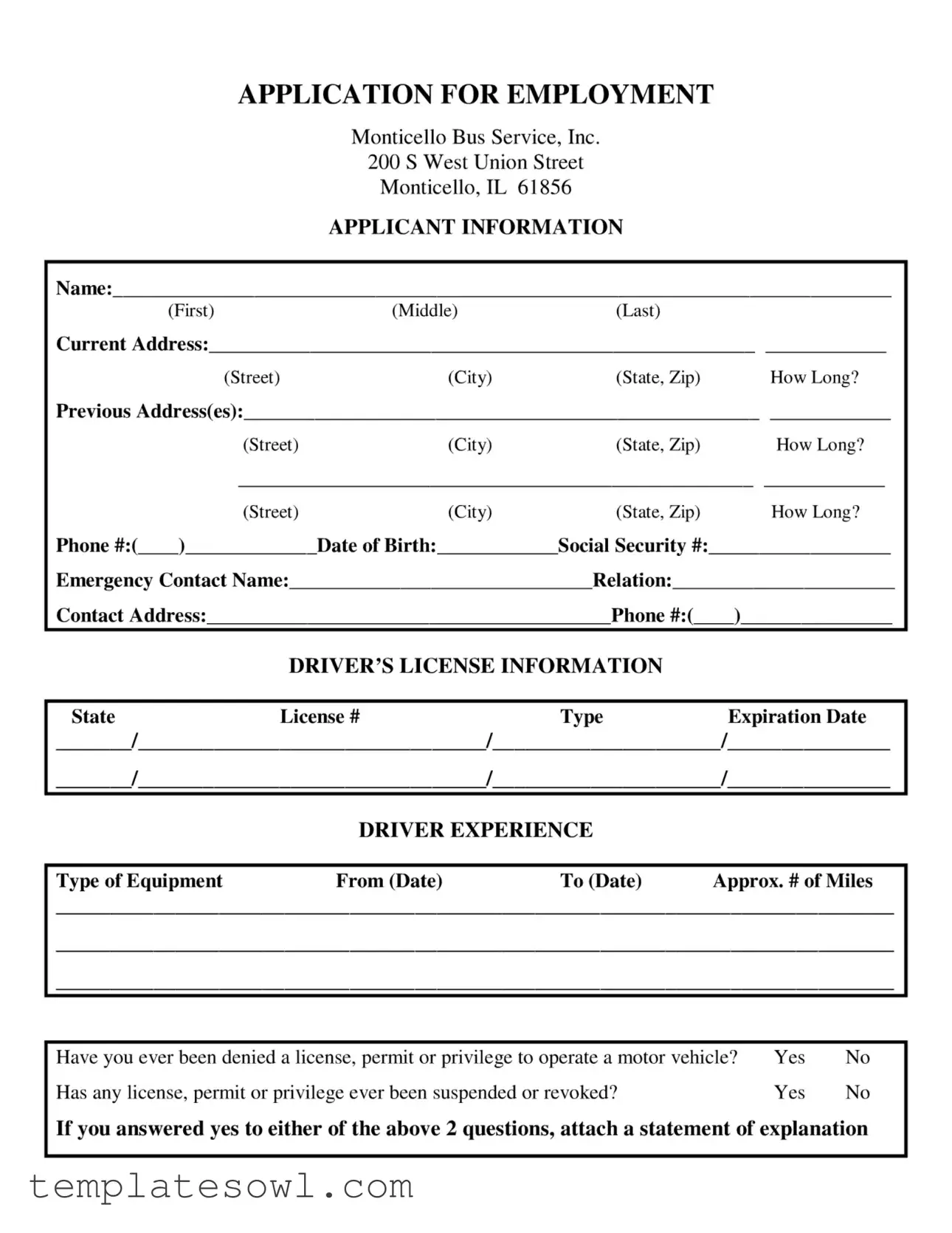What information is required on the Truck Driver Job application form?
The application form requests various pieces of information including your name, current address, previous addresses, phone number, date of birth, and Social Security number. It also asks for information related to your driver's license, such as the state of issuance, license number, type, and expiration date. Additionally, you must provide details about your driving experience, including employment history over the past three years or commercial driving experience for the past ten years.
What should I do if I have had a license denied or revoked?
If you have ever been denied a license, permit, or your driving privilege has been suspended or revoked, it is crucial to provide a statement explaining the circumstances. This information should be attached to your application. Transparency in this area is important for your application process.
Is there a specific format for listing my employment history?
Yes, the form requires you to list your employers, including their addresses and phone numbers. You should also specify your position, the dates you were employed, and the name of your supervisor. Additionally, explain the reason for leaving each job. If you need more space, you can request additional sheets to complete your history.
What is the significance of FMCSA regulations mentioned in the application?
The FMCSA, or Federal Motor Carrier Safety Administration, regulations pertain to safety standards for commercial drivers. You need to indicate whether you were subject to these regulations during your previous employment and if your job was classified as a safety-sensitive function requiring drug and alcohol testing.
How do I know if my job was safety-sensitive according to DOT regulations?
A safety-sensitive function generally includes roles that require operating a commercial vehicle or performing tasks directly related to safety. If your previous jobs involved driving or were impacted by drug and alcohol testing regulations, they would likely fall under this classification.
What if I haven't worked in the last three years?
If you have not held a job in the past three years, you should be prepared to explain this in your application. While the DOT requires employment history for this timeframe, the form can accommodate alternative explanations for gaps, like education, training, or other relevant experiences.
Can I include volunteer experience in my employment history?
Yes, including volunteer experience can provide valuable context about your skills and work ethic. While it may not fulfill the DOT's employment requirements, it can enhance your application and show your commitment to maintaining professional activities during employment gaps.
What is the purpose of providing an emergency contact?
Providing an emergency contact ensures that there is someone who can be reached in case something goes wrong during your employment. This person should be someone who can respond quickly and make decisions if necessary. It's crucial for the safety protocols that employers must follow, particularly in driving occupations.
Is there a deadline for submitting the application?
While the form does not specify a deadline, it is advisable to submit your application as soon as possible. Keeping your submission timely can improve your chances of being considered for available positions. Check directly with Monticello Bus Service for any specific timelines they might have.




